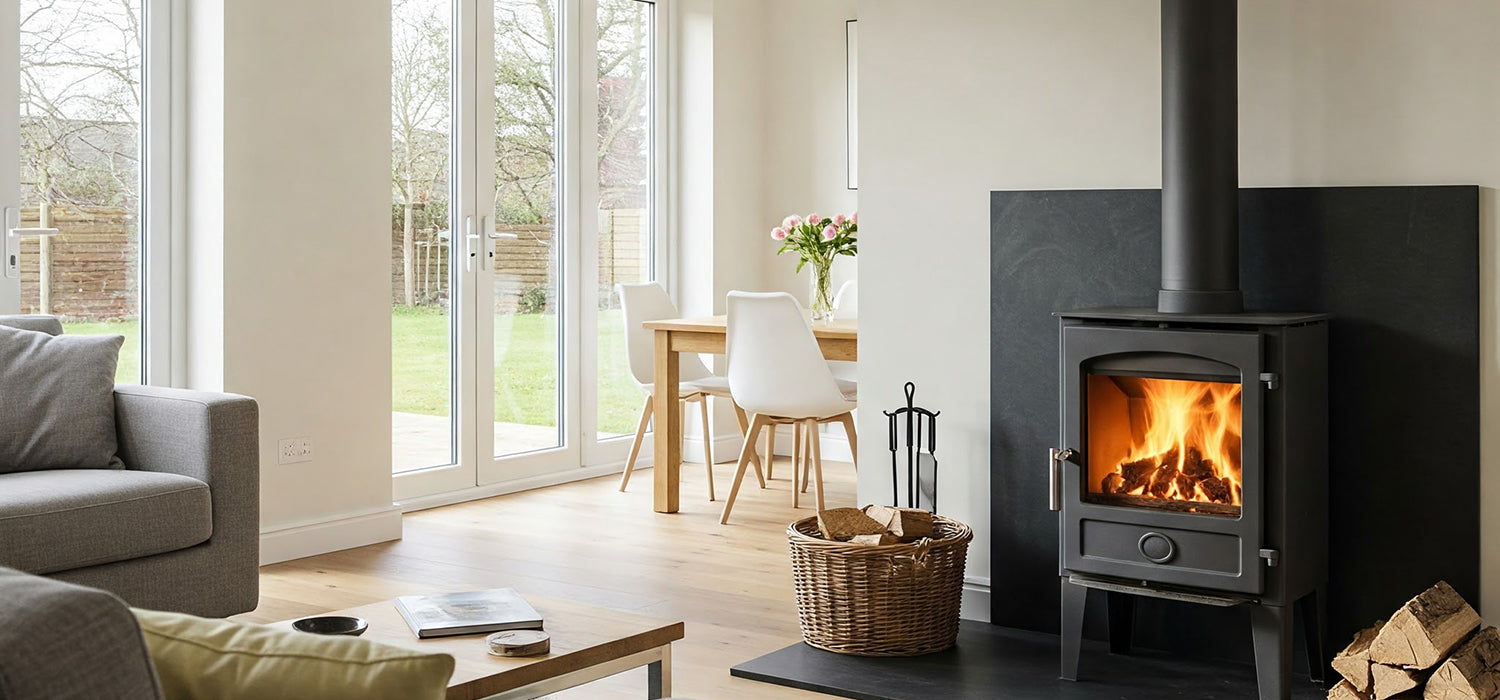
Who Can Sign Off a Log Burner? Understanding UK Regulations
Thinking of installing a log burner? You’ll need more than just a match and enthusiasm. Short answer: only a Competent Person Scheme installer (like HETAS) or your local authority can legally sign off a log burner. Want to avoid fines, fire hazards, and flue fiascos? Keep reading — it’s hotter than you think.
Introduction to Log Burner Sign-Off in the UK
There’s something magical about the glow of a log burner on a chilly evening. The warmth, the crackle, the instant atmosphere — it’s no wonder they’re so popular across the UK.
But before you light that first fire, you need to know this: log burners must be officially signed off. It’s not just a bureaucratic box-tick — it’s the law, and it keeps you, your home, and your insurance safe.
So who can sign off a log burner? In short, you’ve got two options: a Competent Person Scheme installer or your local council’s Building Control department.
Let’s walk through both routes.
Option 1: Using a Competent Person Scheme Registered Installer (e.g., HETAS)
What is a Competent Person Scheme?
A Competent Person Scheme (CPS) is a government-backed scheme that allows qualified professionals to self-certify their work as meeting Building Regulations. This means you won’t need to call out the council to check their handiwork.
When it comes to log burners, HETAS is the most well-known body, though others exist, such as OFTEC and NAPIT. If your installer is registered with one of these, they can handle everything from fitting the stove to signing it off.
Think of it as hiring a chef who also does the washing up. Efficient and official.
The Process with a HETAS Installer
Here’s how it works:
-
You hire a HETAS-registered installer (you can search their website).
-
They install the stove to meet UK Building Regs — mainly Document J.
-
They issue a Certificate of Compliance once the job’s done.
-
They also notify your local authority so you don’t have to.
All that’s left for you is to enjoy the fire — and keep the certificate safe.
Pros of Using a HETAS Installer
-
No need to deal with Building Control
-
Work is done by someone who knows the regulations inside out
-
Faster turnaround — no waiting on inspections
-
Certificate keeps your home insurance valid and smooths out future home sales
It’s the simplest route for most homeowners.
Important Limitation
This only works if the installer is actively registered. If you’re doing it yourself, or using someone who isn’t on a CPS, then this option is off the table.
In that case, it’s time to speak to your local council.
Option 2: Local Authority Building Control (LABC) Stove Sign-Off
When is LABC Sign-Off Necessary?
You’ll need to go through LABC if:
-
You’re installing the stove yourself
-
Your chosen installer isn’t on a Competent Person Scheme
-
You’re trying to get sign-off for a past installation that wasn’t registered
In any of these cases, you must inform your local authority before starting the work. Don’t wait until the stove’s in — inspectors want to see things like the flue and hearth setup in progress.
The Process with LABC
What Does the Sign-Off Inspection Include?
Whether you're going through LABC or using a HETAS installer, expect them to check a few key things:
-
Hearth – Is it the right size, material, and thickness for the stove type?
-
Chimney or flue – Installed correctly and suitable for the appliance. This includes checking the flue liner, connection points, and draught performance.
-
Flue termination height and placement – The flue must extend high enough above the roof (usually at least 600mm above the ridge for pitched roofs) and be a safe distance from roof windows and nearby buildings.
-
Clearances from combustibles – Are there safe distances between the stove, walls, ceiling, and furniture?
-
Ventilation – Is there sufficient airflow for combustion, especially in modern airtight homes?
-
Carbon monoxide alarm – Is it installed correctly and functional?
-
General compliance – The whole setup must meet Building Regulations Document J.
If something doesn’t meet the requirements, they’ll usually give you the chance to make adjustments before issuing the completion certificate.
Here’s what you can expect:
-
Submit a Building Notice to your local council.
-
Pay a fee (usually between £150–£300).
-
An inspector visits — sometimes before, sometimes after the job.
-
If everything’s up to scratch, you get a Completion Certificate.
This certificate is just as valid as one from a HETAS installer — it proves your stove’s legal and safe.
Pros of LABC Sign-Off
-
Great option for DIYers or general trades
-
Offers peace of mind thanks to independent inspection
-
Ensures compliance even without a registered installer
It gives you flexibility, especially if you’re confident in your skills or using someone you trust who isn’t CPS-registered.
Potential Challenges with LABC Sign-Off
-
You need to organise and manage the process yourself
-
There might be delays due to inspection scheduling
-
It can be more expensive
-
If the installation fails inspection, you may have to make changes before approval
Related Considerations for Log Burner Installation and Sign-Off
Building Regulations Document J
This is the official rulebook. It outlines everything from flue size to clearances, ensuring your log burner won’t cause smoke issues or fire hazards.
Your installer should know it inside and out — and if you’re doing the work yourself, it’s essential reading.
Hearth Requirements
The hearth keeps your home safe from stray embers and excess heat. It needs to be made from non-combustible material, and the size and thickness vary depending on the type and size of your stove.
Flue Liner
Most modern installations require a flue liner — a metal tube that runs through your chimney to safely carry away smoke.
It’s crucial that this is installed properly. A poorly fitted liner can lead to poor draft or, worse, leaks of dangerous gases into your home.
Ventilation
Stoves need oxygen to burn cleanly and safely. Newer or well-sealed homes often require an extra air vent in the same room to allow for proper airflow.
No one wants a smoky living room.
Carbon Monoxide Detector
It’s not optional — you must have a working CO detector in the same room as your stove. It should meet BS EN 50291-1 and be positioned according to the manufacturer’s guidelines.
This small device could save your life.
Smoke Control Areas
If you’re in a smoke control area (many towns and cities are), you’ll need a DEFRA-approved stove and can only burn authorised fuels. Using the wrong setup can land you in hot water — or smoky trouble.
Check with your council to see if this applies to your home.
Planning Permission
Most homes won’t need planning permission for a log burner. But if your house is listed or in a conservation area, or if you’re installing a new flue externally, it’s best to double-check.
Always safer to ask than assume.
Fuel Regulations
You can’t just throw any old log on the fire. Wet wood and certain coals are banned under the UK’s Clean Air Strategy.
Only use seasoned wood (under 20% moisture) or kiln-dried logs. They burn cleaner, hotter, and are much better for your chimney and the environment.
Fines and Penalties
Skip the sign-off, and it’s not just your chimney that’s at risk. Councils can issue fines, your home insurance might refuse a claim, and you could face issues when trying to sell your home.
Legal compliance is cheaper than legal trouble.
Conclusion: Ensuring a Safe and Compliant Log Burner Installation
Getting your log burner signed off is about more than just ticking a box. It’s about safety, legality, and peace of mind.
Whether you go the Competent Person Scheme route or use your local council, make sure your installation is done right — and signed off properly. It’s the difference between a warm, relaxing fire and a future full of headaches.
Got questions? Flame Crafters is here to help guide you — from product selection to installation know-how.
Because the only sparks you want are the ones dancing safely behind the glass.
Other content we think you'll love
- Can Log Burner Glass Break?
- How Do Log Burner Fans Work?
- The Truth Behind the Smell of a New Log Burner
- The Ultimate Guide to Choosing the Best Wood for Your Log Burner
- How Long Does a Log Burn in a Stove?
- What Flue for Log Burner: Choosing the Right One for Your Home
- The Ultimate Guide to Choosing the Right Cowl for Your Log Burner
- What Is a Log Burner Service?

